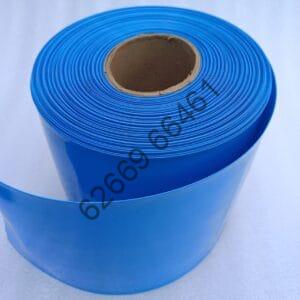Description
Heat shrink tubing is commonly used in lithium battery applications to provide insulation, mechanical protection, and sometimes even to help manage heat dissipation. It’s a versatile material that, when heated, shrinks to fit tightly around components, offering a snug and protective layer. Here’s a breakdown of how heat shrink tubes are typically used in lithium battery construction:
Uses of Heat Shrink Tubing for Lithium Batteries:
- Electrical Insulation: Heat shrink tubing is used to insulate the terminals of lithium-ion cells, ensuring that there is no accidental short-circuiting between adjacent cells or parts of the battery.
- Protection Against Mechanical Damage: The tubing helps protect sensitive battery components from scratches, abrasions, and physical impacts during assembly or in use.
- Thermal Management: Some heat shrink tubes are designed with materials that provide thermal insulation or heat resistance. This can help manage the heat generated during battery charge/discharge cycles and prevent overheating.
- Cell Wrapping: Heat shrink tubes are often used to wrap individual lithium cells in cylindrical battery designs. This helps provide an extra layer of protection against physical damage or leakage.
- Pack Assembly: In larger battery packs, heat shrink tubing is used to bundle multiple cells together securely while offering insulation and ensuring a clean and tidy assembly.
Features to Consider:
- Material: Common materials for heat shrink tubes include polyolefin (a popular choice for battery applications), PVC, and fluoropolymer. Polyolefin is especially known for its excellent electrical insulation, chemical resistance, and flexibility.
- Shrink Ratio: The shrink ratio is important in ensuring the tube fits tightly around the battery cell or wire. Most heat shrink tubing used in lithium batteries has a shrink ratio of 2:1 or 3:1, meaning it will shrink to half or a third of its original diameter when heat is applied.
- Temperature Rating: It’s important to choose a heat shrink tube with a temperature rating that suits the battery’s operating environment. The tube should be able to withstand both the heat generated by the battery and the ambient temperature.
- Thickness: The thickness of the heat shrink tube will depend on the level of protection needed. In lithium-ion cells, thinner tubing is generally preferred to avoid adding too much bulk while still providing effective insulation.
Application Process:
- Choose the Correct Size: Select a heat shrink tube with a diameter that fits snugly over the component or group of cells.
- Apply Heat: Use a heat gun or other controlled heat source to evenly apply heat to the tubing. As the tubing heats up, it will shrink tightly around the battery, providing insulation and protection.
- Inspect for Secure Fit: Ensure the tubing has fully shrunk around the component and has no loose spots.
Common Applications in Lithium Battery Construction:
- Individual Cell Insulation: Wrapping individual cells in heat shrink tubing provides electrical and mechanical protection.
- Battery Pack Assembly: In larger packs, heat shrink tubing is used to bundle cells together, ensuring the pack is secure and properly insulated.
- Busbar Insulation: For applications involving busbars (electrical conductors that connect multiple cells), heat shrink tubing can insulate the busbars to avoid short circuits.
Choosing the Right Heat Shrink Tube:
When selecting heat shrink tubing for lithium battery applications, ensure it meets the following criteria:
- Electrical Insulation: Make sure the material is an effective electrical insulator.
- Thermal Resistance: Choose a heat shrink tube that can tolerate the temperatures generated by the battery cells.
- Size and Shrink Ratio: Select the correct diameter and shrink ratio for your application to ensure a snug, secure fit.
If you’re working on designing or assembling a lithium battery pack, selecting the right heat shrink tube can be critical to ensuring both safety and performance. Are you using heat shrink tubing in a specific part of the battery, such as wrapping individual cells or insulating busbars? Let me know if you need help choosing the best heat shrink tube for your project!
















Reviews
There are no reviews yet.